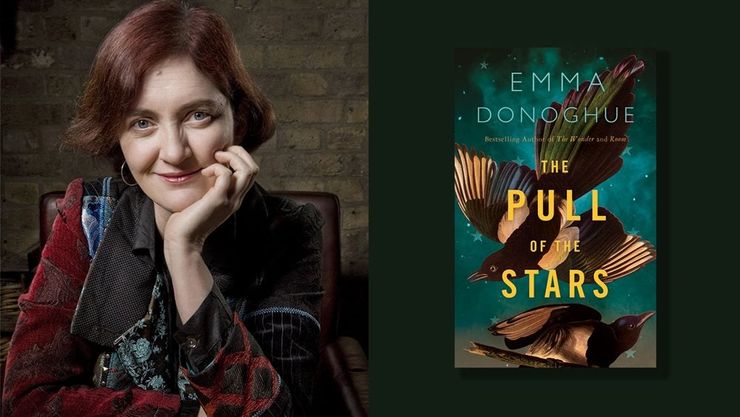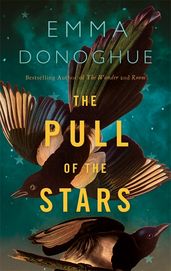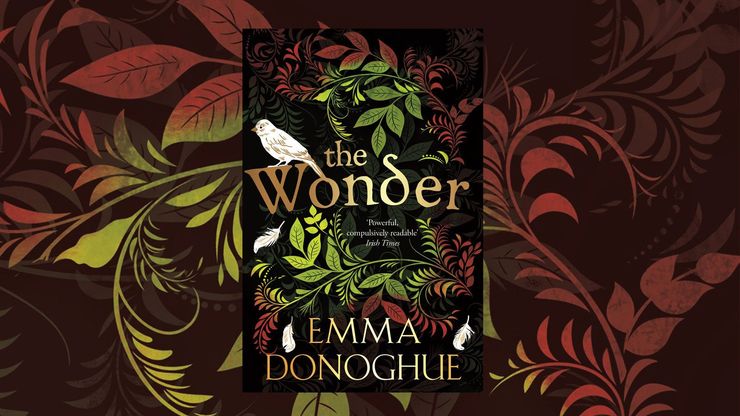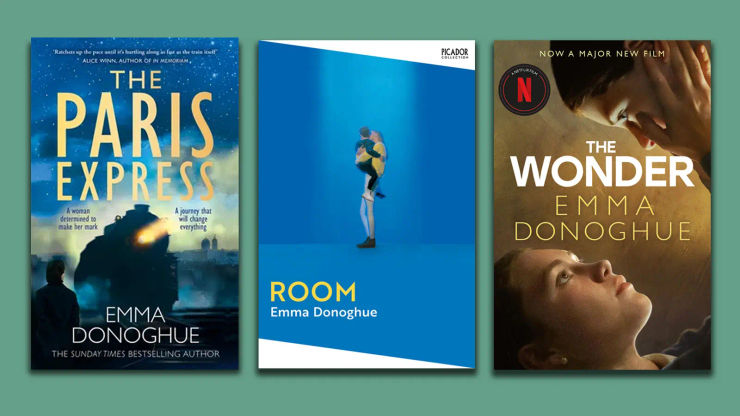Emma Donoghue on her novel, The Pull of the Stars
The Pull of the Stars sees a small band of female doctors and nurses fighting to save lives amidst the 1918 Great Flu pandemic. Here, Emma Donoghue discusses her inspiration for the novel and its similarities with our current times.

When Emma Donoghue began writing her new novel, The Pull of the Stars, she had no idea just how timely it would end up being. Set in a tiny maternity ward in an Ireland ravaged by the First World War and the Great Flu pandemic, the novel sees Dr Kathleen Lynn, nurse Julia Power and volunteer Bridie Sweeney fight to save the lives of quarantined expectant mothers and their babies. Here, Emma tells us how her own experience of giving birth and the devastating effects of the Great Flu inspired The Pull of the Stars.
The Pull of the Stars began over sixteen years ago when I was in premature labour with our first child who, as a playful five-year-old, would be my model for Jack, in Room. It took the caring coaching of two midwives as well as rapid (literally) hands-on intervention by an obstetrical surgeon to bring me and Finn safely through. As I’ve shared this story over the years, I’ve learned that many others I know have had a near miss on that most dangerous day of women’s and babies’ lives. (In 2011 we lost the extraordinary actress Michal Friedman, who plays Jack in the multi-voiced audiobook of Room, when she was giving birth to twins.)
In another sense, I started this novel in October 2018 when I accidentally left my laptop charging at home before taking the train to the Toronto International Festival of Authors. I passed the hours reading every word of The Economist, and a review of several centenary histories of the Great Flu (aka Spanish Flu) of 1918–19 seized my imagination with its images of a weird urban landscape of masked figures, devastating economic shutdown and sudden, random death. Researching and feverishly note-taking on my phone, I found that tiny detail that would become the seed of The Pull of the Stars: pregnant women were particularly vulnerable to catching the Great Flu and suffering premature birth, stillbirth or death as a result. Where in a hospital would they put flu patients who were in labour, I wondered? I pictured a makeshift quarantine ward, small enough at a pinch to be run by one overworked nurse/midwife, or maybe one nurse and a volunteer helper . . . Another of the claustrophobic ‘rooms’ I have a habit of writing about, one where women wage what my protagonist Nurse Julia Power calls ‘our war’.
The pandemic of 1918–19, very likely worsened by the First World War, had a reach that was just as global as the fighting and killed more people (at least 3 per cent of the human race). I set The Pull of the Stars in Dublin partly because that’s my home town, so Irish idiom comes most naturally, but mostly because Ireland was going through a third cataclysm in those years of war and pestilence, a political and cultural one. In 1916, when the six-day Easter Rising startled the nation, most of George V’s Irish subjects – my four grandparents included – would have been flummoxed by the notion of an independent republic. But at the next general election in December 1918, the persecuted activists of Sinn Féin (including Dr Kathleen Lynn from my novel) won by a landslide and set up their breakaway assembly, Dáil Éireann, the Republic of Ireland’s parliament to this day. (I have relatives who served on both sides of the painful Civil War of 1922–3 that followed.) So one question I wanted to ask in this novel was what happened between 1916 and 1918 to transform so many of us from loyal royalists to republican patriots? What must it have been like to be living at a time when so much changed so fast?
Speaking of which. When I sold The Pull of the Stars in October 2019 it seemed like a historical novel, even if it had an atmosphere that could be called post-apocalyptic. Two days after I delivered the final draft, this March, COVID-19 was declared a pandemic. Healthcare workers are in the spotlight, the heroes of our collective tragedy. The Pull of the Stars has benefited from the care of both midwife Maggie Walker and the peerless Dr Tracy Roe (copyeditor and emergency medicine physician), who somehow during the pandemic caught my mistakes and saved real lives at the same time.
Influenza literally means influence – the way stars were thought to shape human health and welfare. I hope The Pull of the Stars moves you and that you stay well.
The Pull of the Stars

As war and disease ravage Ireland, Nurse Julia Power works in a tiny ward in an understaffed hospital, where expectant mothers struck by an unfamilar flu are quarantined together. Julia is assisted by two new arrivals, Doctor Kathleen Lynn, on the run from the police, and a young volunteer helper, Bridie Sweeney, and over the course of three days these women will change each other's lives in unexpected ways. The Pull of the Stars is a classic story of hope and survival from the bestselling author of Room.


